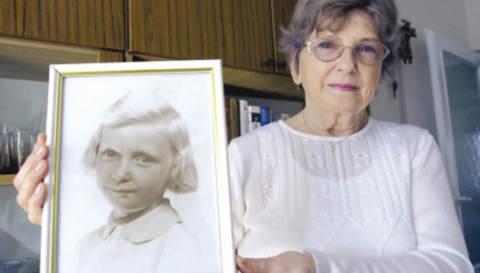Halina and Franciszek, who lived in Poznań, had five children. During the occupation, Franciszek got involved in conspiratorial activities and he became an important member of the underground Polish resistance. In April 1942, he was arrested and then executed. Halina was also detained. She had previously managed to hide her children: the three older ones with her brother, and the two youngest daughters – three-year-old Daria and two-year-old Alodia – with relatives in Poznań. However, it was not possible to shield the two girls from the interest of the Nazis. The two blonde girls were sent to the Office for Racial Affairs for testing, where “experts” judged them to be true examples of the “Nordic” race. They were transported to the Lebensborn centre in Bad Polzin, i.e. Połczyn-Zdrój.
Alodia Witaszek was named Alice Wittke and adopted in January 1944. The girl was taken to the home of the Dahl couple from Stendar, near Berlin. Luise Dahl worked as a secretary; her husband Wilhelm was in France, in a prisoner-of-war camp. The German “Mutti” treated Alice like a little princess. She cuddled her, knitted her dresses, signed her up for swimming lessons and ballet classes.
In Autumn 1947, Alodia/Alice learned that she had to go to Poland and that her “Mutti” was not her real mother. In Poland, her real mother, Halina Witaszek, who had survived a concentration camp, was waiting. Alodia’s classmates called her a “German pig”, bullying her due to her imperfect Polish (her native language having been beaten out of her during her time in the Lebensborn centre).
She maintained written contact with the Dahls and, when she was aged 18, went to visit her German adoptive parents. Later she took her own children there to meet them.
